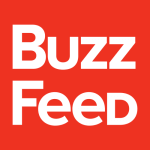 In this day and age of information at our fingertips, 24/7 updates, and social media, it is easy to get overwhelmed and loose track of what news is coming from where. This is when people begin to react with their emotions over their logic. Someone may see a headline that sparks a reaction in them, and they immediately share it on social media. Many times, they will not even read the article or check the source, they simply see a headline, react, and share. This often results in the spread of fake news, and many of these false stories even end up going viral.
In this day and age of information at our fingertips, 24/7 updates, and social media, it is easy to get overwhelmed and loose track of what news is coming from where. This is when people begin to react with their emotions over their logic. Someone may see a headline that sparks a reaction in them, and they immediately share it on social media. Many times, they will not even read the article or check the source, they simply see a headline, react, and share. This often results in the spread of fake news, and many of these false stories even end up going viral.
Fake news is nothing new, it has always been around to mislead or sway people towards a certain belief or action. The difference is now, with the internet and social media, fake news can be spread quickly and reach millions in minutes. There are many reasons why people share fake news stories, and they aren’t always bad intentions. Many people will see a story that supports their views, opinions, or beliefs and without looking too much into it, will share it.
With most of the world getting their news online and through social media, fake news is never hard to come across. It comes in many forms; but will always have an eye-catching headline that tells a story without the reader needing to read the rest of the article. Even if a reader does decide to read the article, these stories are made to seem credible and true. They may even take a story that is real news and change important details to spin the story to the desired view.
This is why readers need to take time and do a little research to verify the news they are reading and sharing with others is, in fact, real news from a credible source. Below are a few steps you can take to make sure the information you are receiving and sending is reliable and true.
- Be sure your news is coming from a credible source.
Pay close attention to the source your story or information is coming from. Is this a credible source? One way to determine this is to look at the author of the piece. Many fake news stories tend to have “staff” or even no author listed. Once you find the author, do a quick search on that author and see what else they have published and if there are any complaints about them producing fake news.
Another big indicator is the domain name, as many websites have been made to mimic true news sources. Watch out for anything with a “.com.co” at the end of the URL, this can be done with well-known news source names to trick readers. A quick web search of the domain name can give you more insight into whether the site is a credible source for news.
One more thing you can do to determine a websites credibility is to check the rest of the website. Do they have sources cited on their stories? Do they have legitimate contact information? Are they well-known or lesser known? Have they covered well-known news stories or do all of their stories appear in a clickbait fashion? These determinates can help you discover whether the site you are reading news from is credible and dependable for future news.
- Read more than just the headline and sub-headline.
A big problem with the spread of fake news is that so many people will see a catchy or controversial headline and immediately share out of an emotional reaction. Others will click the link and maybe scan the article quickly, decide it appeals to their views, and share it without ever checking for credibility. This is where a major problem lies and how false stories get spread so quickly by so many.
Take time to go to the story and read through it carefully, maybe even more than once. Check the credibility of the author and website as laid out in the first step. Sometimes you may find the story behind the headline is something completely different from what it was made to sound like. Other red flags may be bad grammar or misspellings throughout the story, this could point to a fake story as credible pieces are proofed quite thoroughly. Check to see if any facts or quotes shared in the story are cited at the end of the article, and if so, are those sources credible as well. This may sound like a lot of work, but it will help to protect your character and credibility as well as make sure you are getting reliable and correct information.
- Is the information being reported by multiple sources?
When you find a news story of interest, check and see if it is being reported on by multiple news sources. Usually, if a story is true and timely, it will be covered by more than one news source. It is very rare that a story that is capable of making the news will only be reported by one publication. If it is a national or international story, check with trusted major news organizations to see if they have any mention or information on the story. If you are reading a local story, check with other local publications or get in contact with your local publication and see if they have heard anything about the story in question.
In addition to this, make sure the story you are looking at is timely. Sometimes an old story will begin to circulate attempting to pass as a new story. There may also be an attempt to falsify this information, which is why it is always good to cross examine with other news sources.
- Check Your Story with a Fact Checking Website.
With so much information available the internet, it is not always possible to do in depth research for every story you come across. If there is a viral story you come across, there are fact checking websites that do this research for you. Websites such as www.snopes.com take viral news stories and let you know whether they are real or fake, and if they are real, if the facts presented in the story are accurate. There are many websites like this online, so it also wise to make sure you are using one that is credible and non-biased to get accurate information.
There are fact checking websites run by non-profits, educational centers, and libraries. These are usually the most reliable ones to gather information from.
In Conclusion
When gathering your news from social media and online sources, your critical thinking and attention to detail will go far in detecting fake news. Often fake news stories are made to drive emotional responses and are written in such a way to do just that. Practice taking the time to check sources, research the story, and use fact checking sites to weed out the fake news from the real news. With time, you will begin to see a trend in how fake news presents itself and will be well equipped to avoid it. By following these simple steps, you can help prevent the spread of fake news and misinformation and help your credibility in the process. In a time of unlimited information, make sure the news you are getting is credible and dependable.
 Digital and social media are transforming how government institutions, political campaigns and trade associations are communicating and marketing to their key audiences.
Digital and social media are transforming how government institutions, political campaigns and trade associations are communicating and marketing to their key audiences.